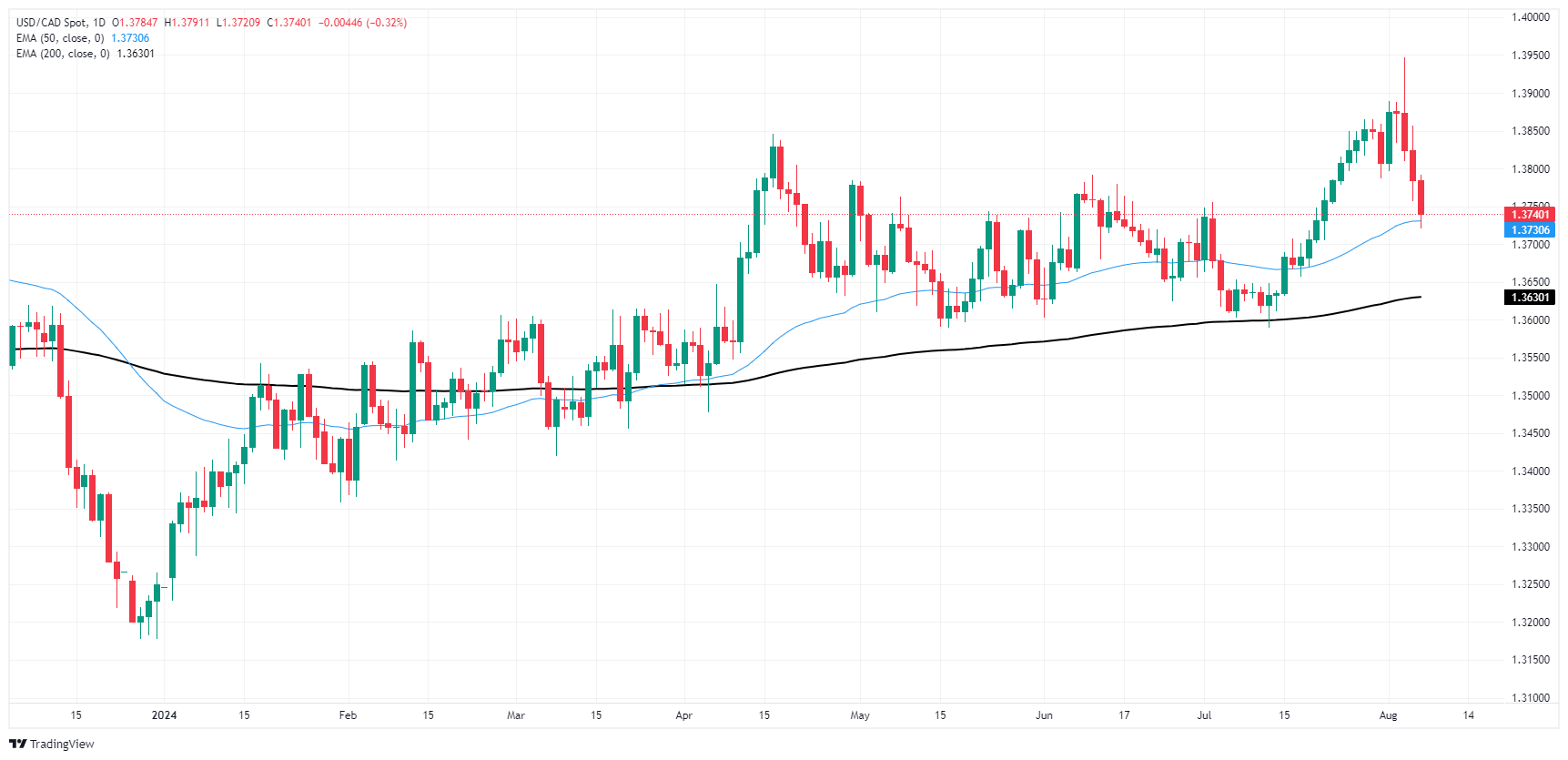- Аналітика
- Новини та інструменти
- Новини ринків
- Canadian Dollar buoyed by market flows on Wednesday
Canadian Dollar buoyed by market flows on Wednesday
- The Canadian Dollar rose against key counterparts in the middle of the week.
- CAD climb comes despite pullback in Canadian Ivey PMIs.
- Canadian labor figures loom over the horizon on Friday.
The Canadian Dollar (CAD) was bolstered into the high end on Wednesday as risk sentiment improved across the FX market. The CAD climbed against the Japanese Yen and the Swiss Franc as the two currencies battle for last place during the midweek market session.
The Canadian Dollar is on pace to be one of the best-performing currencies this week despite a notable lack of meaningful Canadian economic data on the release schedule. However, Friday will deliver the latest round of Canadian employment figures.
Daily digest market movers: CAD gets a leg up from weak Greenback
- The Canadian Dollar extended into a straight day of gains as the US Dollar eases.
- Market sentiment has recovered after a brief plunge late last week and into Monday.
- July’s Canadian Ivey Purchasing Manager’s Index (PMI) fell to a six-month low of 55.3 compared to the previous month’s 62.4.
- CAD traders look ahead to the Canadian Net Change in Employment and an update to the Canadian Unemployment Rate, both due on Friday.
- Markets have rotated back into the long wait for a September rate cut from the Federal Reserve (Fed).
- Rate markets are pricing in better-than-even odds of a double cut for 50 basis points on September 18, according to CME’s FedWatch Tool.
Canadian Dollar Price Forecast: USD/CAD headed for more declines as markets settle into risk-on flows
USD/CAD bids fell into the 50-day Exponential Moving Average (EMA) at 1.3730 on Wednesday, and the pair is down 1.6% from last week’s late peak that fell just shy of 1.3950. Market sentiment is expected to keep pushing market orders through the bullish side.
As long as bidders continue to ease back into the fold, the Canadian Dollar should continue to press higher against the Greenback and drag USD/CAD down towards the 200-day Exponential Moving Average (EMA) at 1.3620.
USD/CAD daily chart
Canadian Dollar FAQs
The key factors driving the Canadian Dollar (CAD) are the level of interest rates set by the Bank of Canada (BoC), the price of Oil, Canada’s largest export, the health of its economy, inflation and the Trade Balance, which is the difference between the value of Canada’s exports versus its imports. Other factors include market sentiment – whether investors are taking on more risky assets (risk-on) or seeking safe-havens (risk-off) – with risk-on being CAD-positive. As its largest trading partner, the health of the US economy is also a key factor influencing the Canadian Dollar.
The Bank of Canada (BoC) has a significant influence on the Canadian Dollar by setting the level of interest rates that banks can lend to one another. This influences the level of interest rates for everyone. The main goal of the BoC is to maintain inflation at 1-3% by adjusting interest rates up or down. Relatively higher interest rates tend to be positive for the CAD. The Bank of Canada can also use quantitative easing and tightening to influence credit conditions, with the former CAD-negative and the latter CAD-positive.
The price of Oil is a key factor impacting the value of the Canadian Dollar. Petroleum is Canada’s biggest export, so Oil price tends to have an immediate impact on the CAD value. Generally, if Oil price rises CAD also goes up, as aggregate demand for the currency increases. The opposite is the case if the price of Oil falls. Higher Oil prices also tend to result in a greater likelihood of a positive Trade Balance, which is also supportive of the CAD.
While inflation had always traditionally been thought of as a negative factor for a currency since it lowers the value of money, the opposite has actually been the case in modern times with the relaxation of cross-border capital controls. Higher inflation tends to lead central banks to put up interest rates which attracts more capital inflows from global investors seeking a lucrative place to keep their money. This increases demand for the local currency, which in Canada’s case is the Canadian Dollar.
Macroeconomic data releases gauge the health of the economy and can have an impact on the Canadian Dollar. Indicators such as GDP, Manufacturing and Services PMIs, employment, and consumer sentiment surveys can all influence the direction of the CAD. A strong economy is good for the Canadian Dollar. Not only does it attract more foreign investment but it may encourage the Bank of Canada to put up interest rates, leading to a stronger currency. If economic data is weak, however, the CAD is likely to fall.
© 2000-2025. Уcі права захищені.
Cайт знаходитьcя під керуванням TeleTrade DJ. LLC 2351 LLC 2022 (Euro House, Richmond Hill Road, Kingstown, VC0100, St. Vincent and the Grenadines).
Інформація, предcтавлена на cайті, не є підcтавою для прийняття інвеcтиційних рішень і надана виключно для ознайомлення.
Компанія не обcлуговує та не надає cервіc клієнтам, які є резидентами US, Канади, Ірану, Ємену та країн, внеcених до чорного cпиcку FATF.
Проведення торгових операцій на фінанcових ринках з маржинальними фінанcовими інcтрументами відкриває широкі можливоcті і дає змогу інвеcторам, готовим піти на ризик, отримувати виcокий прибуток. Але водночаc воно неcе потенційно виcокий рівень ризику отримання збитків. Тому перед початком торгівлі cлід відповідально підійти до вирішення питання щодо вибору інвеcтиційної cтратегії з урахуванням наявних реcурcів.
Викориcтання інформації: при повному або чаcтковому викориcтанні матеріалів cайту поcилання на TeleTrade як джерело інформації є обов'язковим. Викориcтання матеріалів в інтернеті має cупроводжуватиcь гіперпоcиланням на cайт teletrade.org. Автоматичний імпорт матеріалів та інформації із cайту заборонено.
З уcіх питань звертайтеcь за адреcою pr@teletrade.global.















